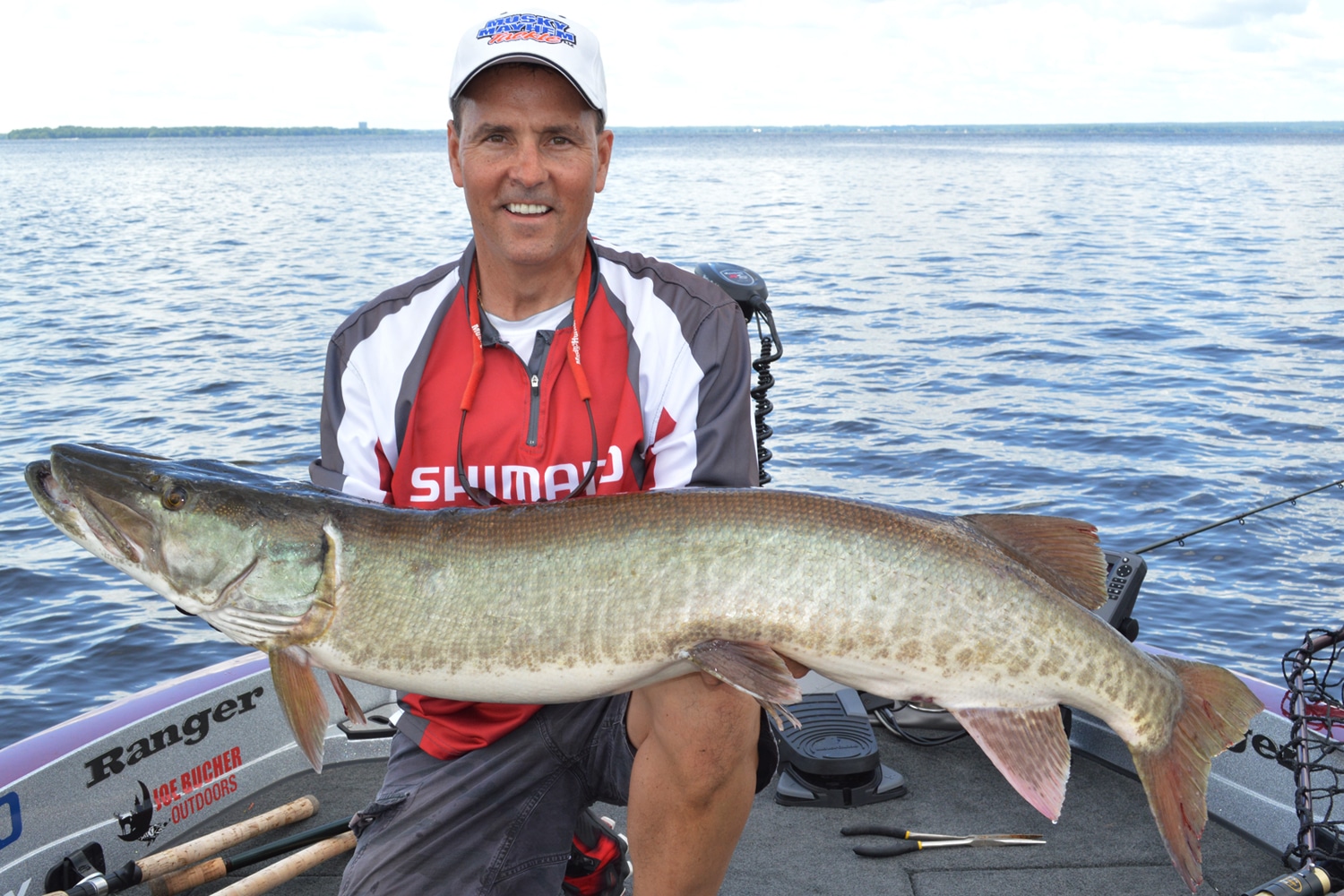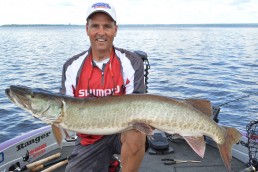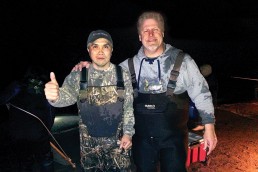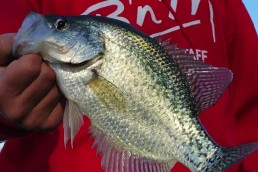Bump and Run
SHARE THIS POST
When things are going right, it seems like you can almost cast a Batman figure and get a muskie to bite. Then again, there is the reality where on most days you have to work for a bite; sometimes you really have to struggle for a bite. Whether it is windy or calm, here are two techniques I rely upon.
Inevitably, in midsummer you get those days where the warm winds blow and blow and the waves build and boat control becomes difficult, but the muskies will still bite. Now, in many situations it may be difficult if not impossible to finesse-fish a jerkbait or soft plastic.
So, what’s left?

There is a great solution when the winds howl: Go shallow and crash the rocky points. You’ll have to be careful with respect to boat control, and these are the days when I’ll use all 109 pounds of thrust from my MotorGuide, and even at times leave the kicker motor running just as a precautionary measure to keep me out of trouble. This is actually a great time to use the anchor lock feature on your trolling motor to hold you in a spot to make more casts.
I’ll look on a map and start focusing on rocky, wind-blown points, and they can be related to islands or the shoreline. It doesn’t matter because I am looking for the commotion created by the wind to make a big muskie active, or at least, make the fish more likely to make a mistake.
Are you enjoying this post?
You can be among the first to get the latest info on where to go, what to use and how to use it!
To complement the turmoil in the water column caused by the big winds, I’ll choose a large, big- profile minnowbait such as a 9-inch ShallowRaider and try to crash the bait into the rocks. This is a time to focus on the tops of the points and the tips of the extensions. Keep the boat out from the point, but cast the minnowbait right on top of the rocks and start using a rip and a pick up the slack retrieve. Reel fast, rip or jerk the rod about a foot and repeat. Try to knock the lip off the minnow bait. These big minnow baits are simply big-profile lures, adding more chaos to the situation around the shallow rocks. Any muskie that is thinking about feeding will hear the banging, see the flash and quick movement of the lure, and in many cases, will have to either strike or get out of the way.
When conditions go flat, it’s time to try an entirely different approach. If you don’t check out the slop, there are times you won’t catch fish. Now, on those bright and sunny days, whether they are post-frontal or just sunny days with no wind, besides getting deep into the slop, you can get into what more experienced slop anglers call the “fringes of the slop” and pull muskies. These areas, I’ll focus on in the weed beds and the weed flats. Not necessarily the inside edge of the deep slop, where you almost need a weedless lure. Rather than focus on those areas, I’ll go back to my more traditional approach and look for pockets in the thicker cover where I can cast a soft plastic and work the bait—a little.
I call this “pickpocket fishing” because you are just doing that—picking apart the pockets of the weeds. You’re making shorter, focused casts to pockets or openings in the weeds. You are still going to get your lure fouled with weeds almost every cast, but you can at least work a pocket or two and maybe trigger a strike before the lure fouls in the cover. I’ll either fish a Shallow Invader or a “Magnum” Shallow Bull Dawg in these situations. I’ll toss the bait in a pocket, drive it down with a rip or pull and let the bait rise. Repeat this dive-and-rise technique a few times, and when you get to the edge of the pocket, you’ll either get a strike or the lure will foul. Crank it in and try again. You’ll really have to focus on controlling your cast and manipulating the lure. My other lure of choice in this situation is a Magnum Shallow Bull Dawg. Again, I cast the lure to the pockets, but rather than drive the bait down, you control the drop speed by jerking the lure. It is a slower, more natural glide and fall into the pockets than a Shallow Invader.
Whether it’s windy or calm, you have to adapt. Crash the rocks or pickpocket the weeds this summer when you’re searching for a bite.
MWO
SHARE THIS POST
Did you enjoy this post?
You can be among the first to get the latest info on where to go, what to use and how to use it!
Jim Saric
Jim Saric is a Legendary Angler in the Freshwater Fishing Hall of Fame, the host and executive producer of The Musky Hunter television series, editor at large of Musky Hunter magazine, a seven-time muskie tournament winner, and a contributing writer for numerous other publications.



